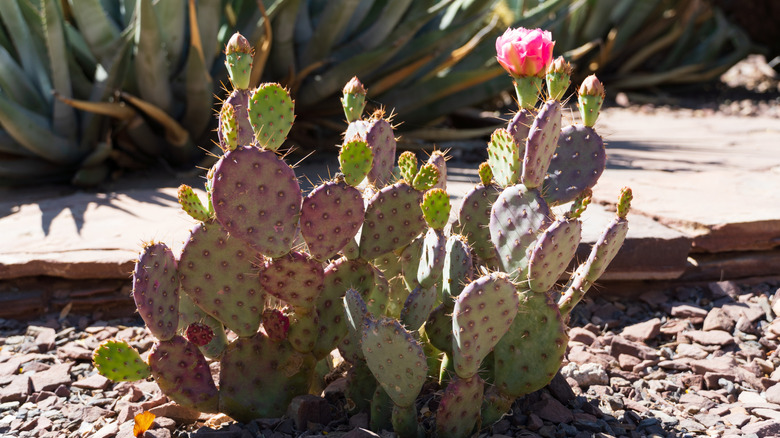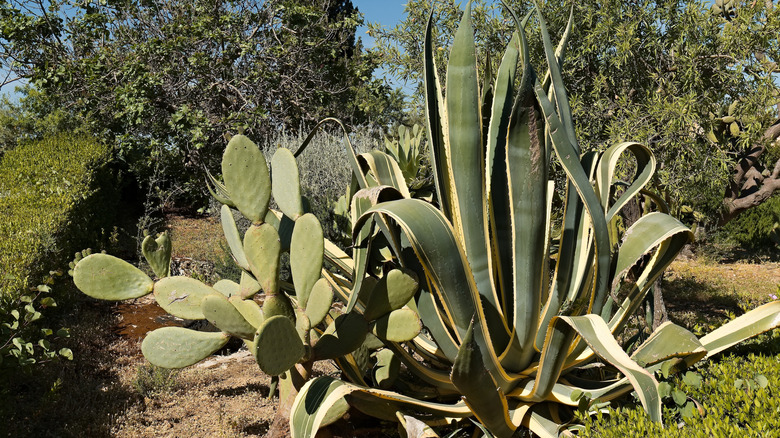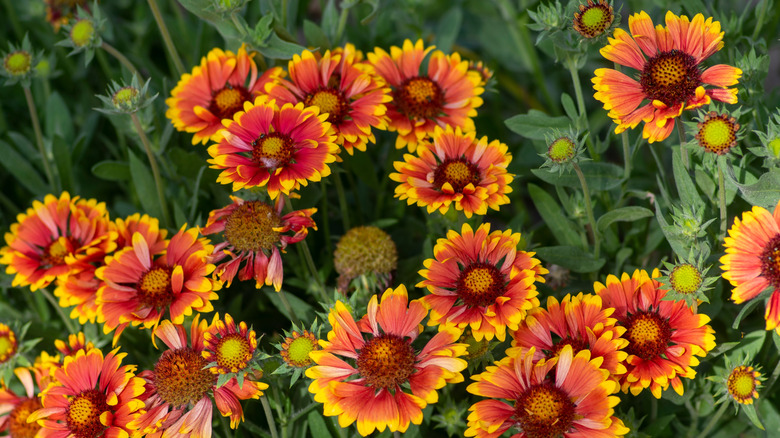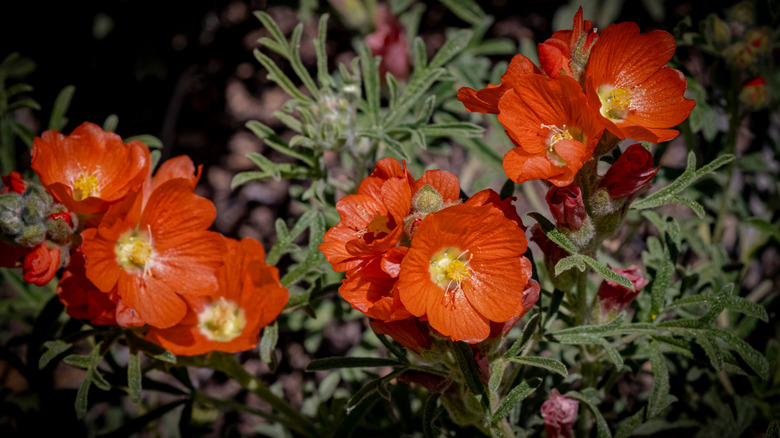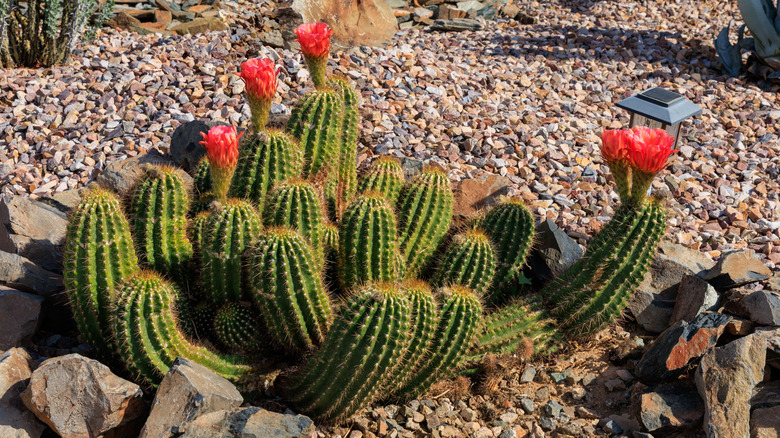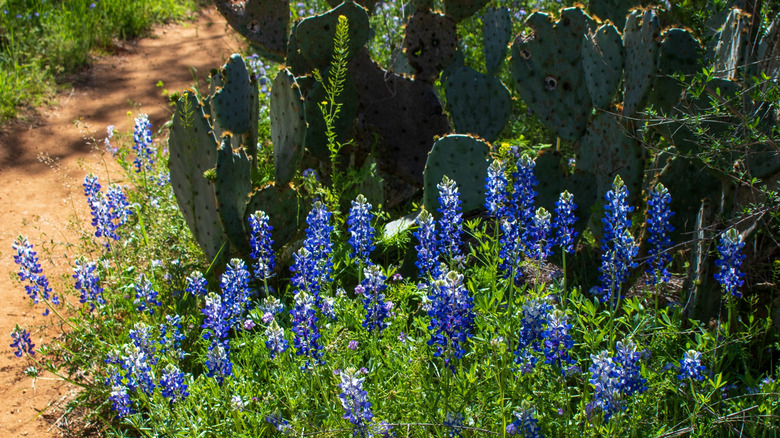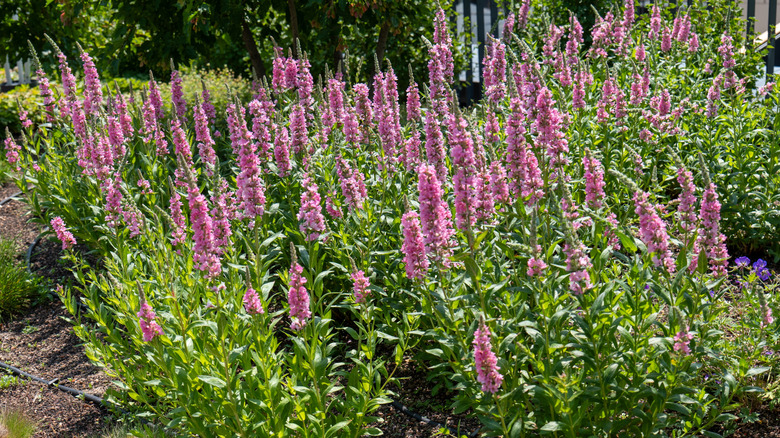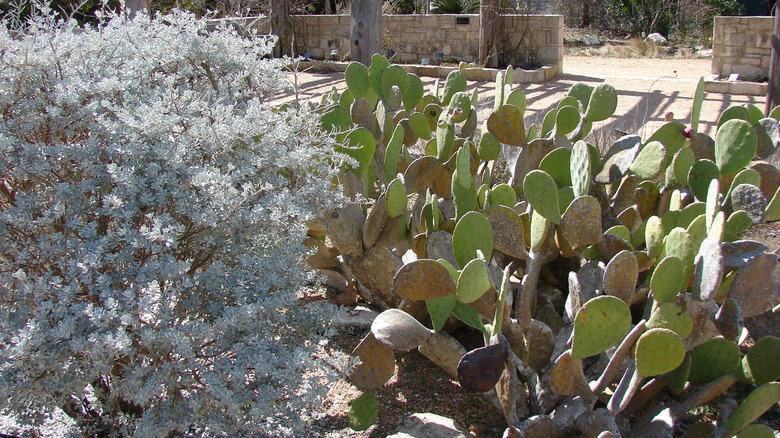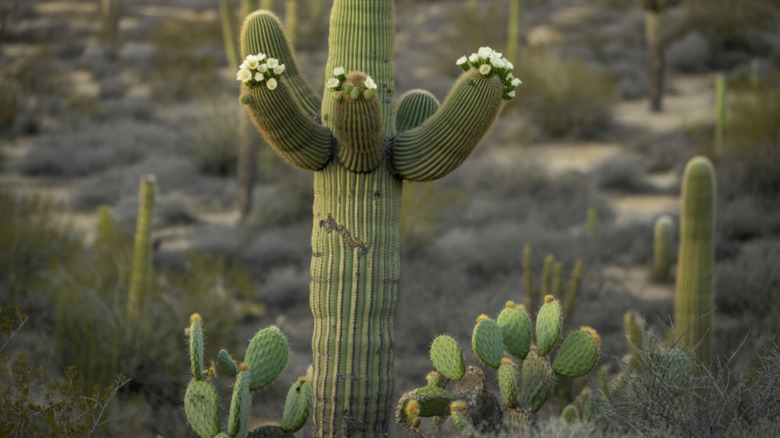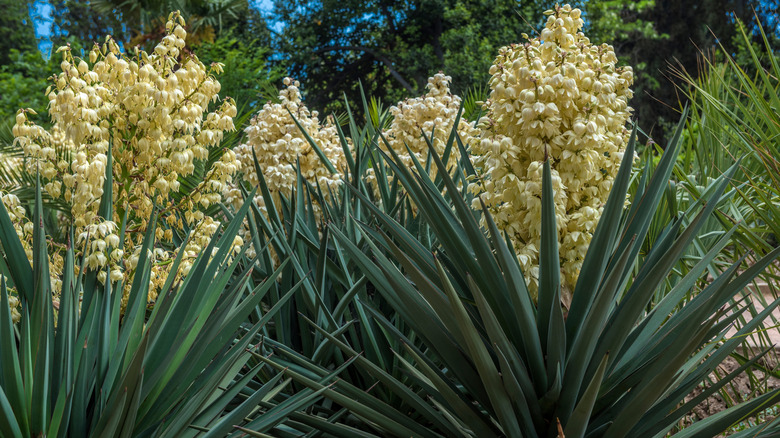The 9 Best Companions To Plant With Prickly Pear Cactus
Prickly pear cactus (Opuntia spp.) is a striking succulent plant that provides a rugged, desert vibe to yards and gardens. But since it has the growing preferences particular to cacti and succulents, you won't be able to combine it in your landscaping with just any shrubs or herbs. If you grow it side by side with plants requiring large amounts of water, your cactus may end up rotting. This plant excels at growing in dry locations, which means that it grows beautifully with plants that have similar needs, such as globe mallows, penstemons, and agaves. And since prickly pear cactus is one of the types of cacti you can grow around your home for extra security, you can visually soften its bristly spines with the right choice of companions. This can be done while still maintaining this plant's home-protecting benefits.
Since prickly pear cacti need well-draining, dry soil and full sun, the best companion plants will share these same growing needs and will also be adapted to your USDA Hardiness Zone. With over 150 species of prickly pear cacti, not all gardeners will grow the same type. Hopefully, you have already chosen an Opuntia species native to your region. It's a great idea to choose companion plants that are also native and well-adapted to your locale. The following selections make suitable plant partners for prickly pear cacti, but you will need to narrow your list down to the best options for your specific location.
Agave
Members of the Agave genus, also known as century plants, are among the best companion plants for prickly pear cactus. With spiky rosettes of leaves, there are many different types of agave, rated for different zones and growing to various sizes, from just 1 foot tall and 1 foot wide to 10 feet tall and 15 feet wide. With so many options, you'll have an easy time finding one with the color combination or plant shape and size you prefer. Like Opuntia species, agaves need full sun and dry soil with excellent drainage. This pairing is ideal for those living in the southwestern US and Florida.
Blanketflower
Loved for their wheel-like flowers in warm tones of oranges, reds, yellows, and browns, blanketflowers (Gaillardia aristata) are wildflowers that make excellent companion plants for a prickly pear cactus. Adapted to Zones three to eight, blanketflowers thrive in full sun and in soil with excellent drainage. They also tolerate dry soil well. And as an added bonus, blanketflowers are colorful and hardy perennials that butterflies love. The blanketflower and prickly pear cacti combination will grow best in the north central to Pacific Northwest regions of the US as a native plant combination.
Globemallow
With beautiful orange to red blooms that bees like to sleep in, globemallow (Sphaeralcea spp.) is a wildflower that is well-adapted to arid growing conditions. Reaching up to 3 feet tall, these self-seeding perennials grow perfectly as companion plants to the prickly pear cactus. These brightly-colored and heat-loving flowers prefer dry, well-draining soil and full sun. Gardeners in the central and western US, living in Zones four to 10 will be able to find a globemallow species for their location.
Hedgehog cactus
Hedgehog cacti (Echinocereus spp.) are low-growing plants that are covered with spines and produce showy blooms. Reaching around 1 foot tall, these arid-climate plants produce single stems or multiple stems that grow in clusters. With dozens of different species originating in the central and western US, hedgehog cacti are adapted to different zones, but they all have similar growing needs — dry, well-draining soil and full sun, making them one of the best companion plants for prickly pears. Lovers of hummingbirds take note — these are also flowering succulents that hummingbirds can't resist.
Lupine
Members of the legume family, lupine (Lupinus spp.), are gorgeous wildflowers that bear distinctive spikes of pea-flower-like blooms. Depending on the species of lupine, these spring and summer bloomers are adapted to Zones four to eight. Select a lupine well-suited to dry conditions and full sun to ensure a successful pairing with the prickly pear cactus. One of the best choices is the Texas bluebonnet (L. texensis), which reaches up to 18 inches tall and is native to the south-central US.
Penstemon
Penstemons, also known as beardtongues, are among the low-maintenance, perennial plants that hardly need any attention to thrive. With showy, tubular flowers, penstemons excel at drawing in pollinators, making them excellent picks for pollinator-friendly gardens. The Penstemon genus contains close to 300 different species that are adapted to different zones across the US and reach different sizes. Among these, numerous penstemons can grow alongside prickly pear cacti, as they also need full sun and well-draining, dry soil, such as the Rocky Mountain penstemon.
Sagebrush
Sagebrush (Artemisia spp.) is a scrubby, silver-leaved shrub that is a common feature of the western US landscape. And with its preferred growing conditions — full sun and dry, well-draining soil — it's a perfect companion plant for prickly pear cacti. With many different types of sagebrush, these plants are adapted to various zones and grow to different heights, ranging from just 2 feet tall to 15 feet tall. This pairing will be ideal for those living in the western half of the US.
Saguaro
With huge columnar trunks and upturned side branches, the saguaro cactus (Carnegiea gigantea) is as iconic as it is important to the ecology of the desert southwest. Those who live in the Sonoran Desert, where saguaro cacti grow natively, can consider these regal cacti as companion plants for the prickly pear cacti that grow there, too. Like Opuntia species, saguaro need dry soil with excellent drainage, and they thrive in full sun. Don't try to grow one of these cacti unless you live in Zones nine or 10.
Yucca
Gardeners wishing to accentuate the desert vibe of a prickly pear cactus may prefer to grow a Yucca species as a companion plant. To correctly grow a yucca plant, provide it with full sun and well-draining, dry soil. There are various types of yucca that reach different sizes and are adapted to different zones, since there are Yucca species native to most of the US. Gardeners should expect spiky-looking plants with linear or lance-shaped leaves, and should take into account that some yuccas are low-growing with rounded shapes, while others have tree-like trunks.
